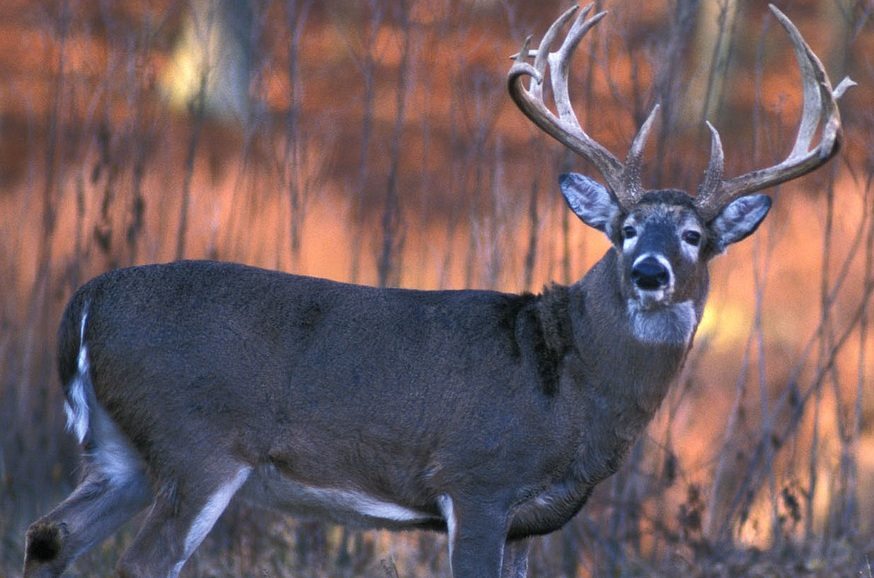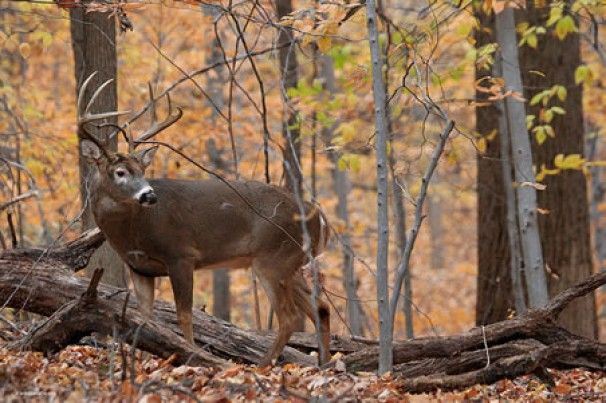30 Oct SMART BUCKS!!!
We have all encountered great Bucks that we never got. These stealthy critters seem to be smarter than the average Buck.

After some serious Scouting, I located a huge bedding area, rubs, and scrapes. I placed a portable tree stand and planned a scent free access route. I sat in that stand for weeks. My butt was in that stand from morning until evening.
Several smaller bucks were in the area, but I never saw a Buck that matched the sign. This was in the day when we did not have the technology like Tree Cams. I used string and horizontal branches to monitor trails. Something was using the trails and Big Buck tracks were showing up.
When Rut came into play, I thought that I would surely see the Big Buck. I figured that he was nocturnal and that the Rut would get him out in the daytime. The funny thing was that the landowner was seeing the buck everyday that I was not there. Heck, he even had pictures.
I was parking about 300 yards from the stand, near a thick Bamboo tree patch. This was where the landowner allowed all his hunting guests to park. I noticed a deer trail going into the bushes. Immediately, I spooked the buck. Every time I parked the truck, the Buck knew when a hunter was there. Apparently, history, experience, and memory had patterned the hunters. After that last encounter, the sign dried up and I never saw the Buck again.
Many hunters have argued whether Deer can Reason, think, remember, or make conscious decisions. They certainly can communicate and have great senses. But, if they can see me blink my eye at 100 yards, why can’t they see a tractor trailer coming down the road?
Deer live a life that is about three primary issues. Food, Sex, and Danger. They are always on alert, hungry, and in the mood. Some mammals, other than humans have memory. Dogs can remember over 260 words and commands. Parrots can repeat words. Conditioning and training can get animals to perform and to tasks or tricks.
So, what if deer are “Sentient”? The dictionary defines this as “The ability to feel and perceive things. To Think and Reason.” We have always been taught the animals are just animals. What we observe as emotion, thought, and problem solving are rooted in instinct. What appears to be conscious choices are simple reactions to experiences, fear, or needs. All of these are learned in Survival of the Fittest, scenario.
If Deer and Big Game could talk, I wonder what they would say to humans? Much of what deer do involves NO REASONING. What we observe is the result of Behavioral Instincts. Deer survive because of what they are taught and experience. These lessons begin with a doe as the teacher.
The deer of today have adapted through generations. That means that todays deer are smarter than those deer from the past. A good example of this is how deer have become more nocturnal. Deer from centuries ago were daytime critters. Hunting pressure made them creatures of the dark and low light times. Behaviors are taught by survivors.
Fed Critters are Dead Critters. If a deer is taken from the wild and fed as a lawn pet, its natural fear toward humans and other risks will not be learned. Zoo animals rarely survive when reintroduced to the wild. Responses are conditioned after repetitions of rewards or punishments. Wild critters need to fear danger and humans. If that is taken away, a negative outcome is guaranteed.
Deer and other wild critters “perceive” their environments. Their nervous systems allow them to feel comfort, pain, thirst, hunger, and awareness to their environment. The water is here, the food is over there, the fences are…

Deer can communicate, as most critters can. A grunt, bleat, and other limited sounds allow deer to identify and alert other deer. Dogs bark, wolves howl, and elk bugle. All creatures communicate at some primitive level. Does this mean that they can Reason? Too bad they can’t say “Watch out for that Truck!”
Much of a deer’s behavioral revolves around its senses. Smell, sound, hearing, sight, and feeling will cause them to mate, flee, feed, or move. These instinctive behaviors direct their lives. As with infants, much of their behaviors are learned through experience. A match is hot, ice is cold, and the stairs can make me fall. These learned behaviors reduce risks.
Many lessons taught to trained animals and pets are the result of extensive conditioning. This may take many repetitions and refreshers. Electric shock is one way to have lessons become more quickly learned. For wild animals, experience is the best teacher. Critters will learn who or what cares for them, feeds them, or threatens them. Does this mean that they can Reason?
Reacting and Reasoning are not the same thing. When a human is startled, they react. Fight or flight sets in immediately. This is a response without thinking and reasoning. Simply a fear factor result. If we had time to think about our reaction, we would not scream and run off like a little child! Maybe, the question really should be, how much like animals are humans?
If you grew up watching ‘Bambi”, then animals are like cartoon characters. They dance, talk, sing, and are as smart or smarter than humans. If that were true, maybe humans would be in a different level in our ecosystem. This is an image created by artistic and innovative humans. It is not real!
There are plenty of critters better prepared for survival than humans. Our bodies are simply “Bags of Water!” We are easily injured ad damaged. It is our reasoning and intelligence that allow us Fragile lives to survive.
Evidence does not support that deer can rationalize and reason on a level that makes them “Thinkers.” Rational Thinking requires more brain mass and evolution. Humans are smarter than animals. That is why we are at the top of the food chain, I THINK!
Hunt ethically, respectfully, honestly, and as a true Sportsman.
Montana Grant
For more Montana Grant, find him thinking at www.montanagrantfishing.com.

